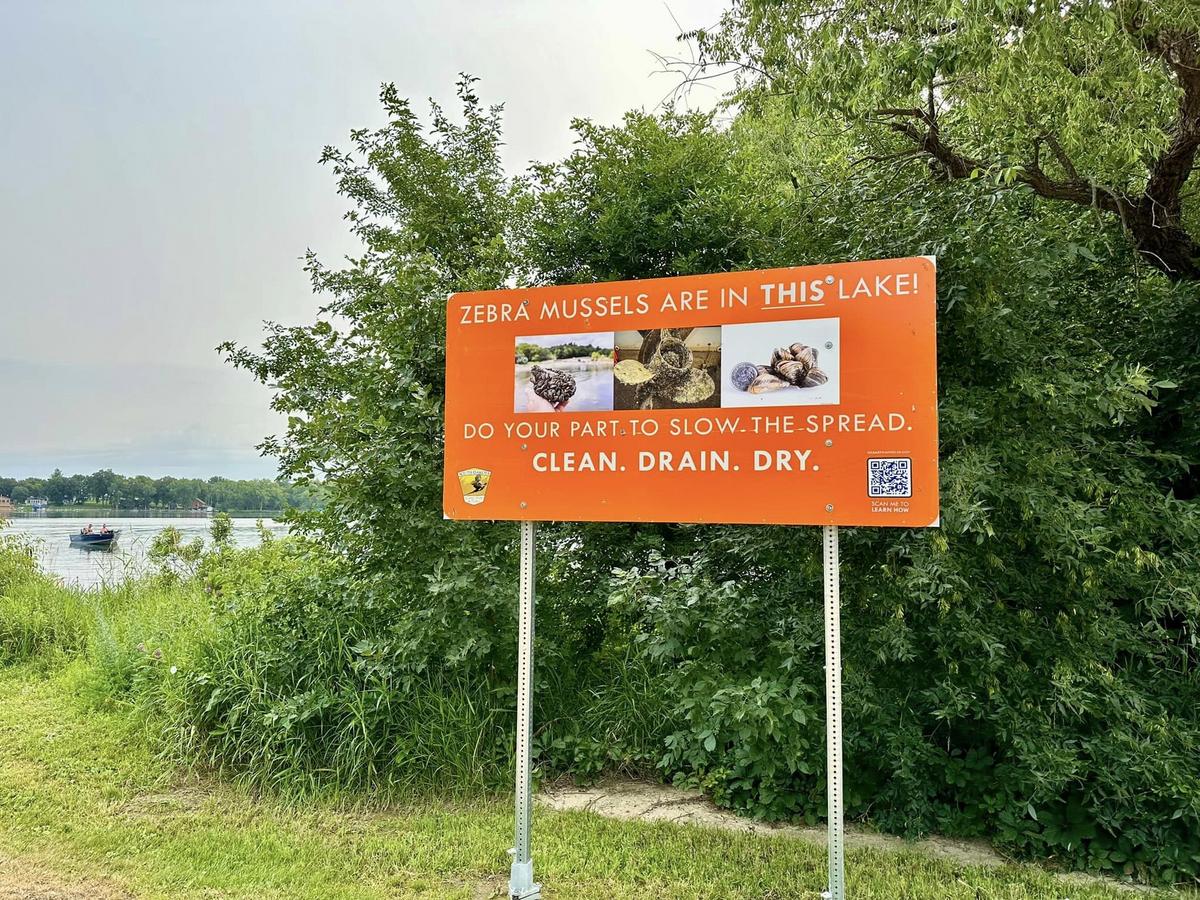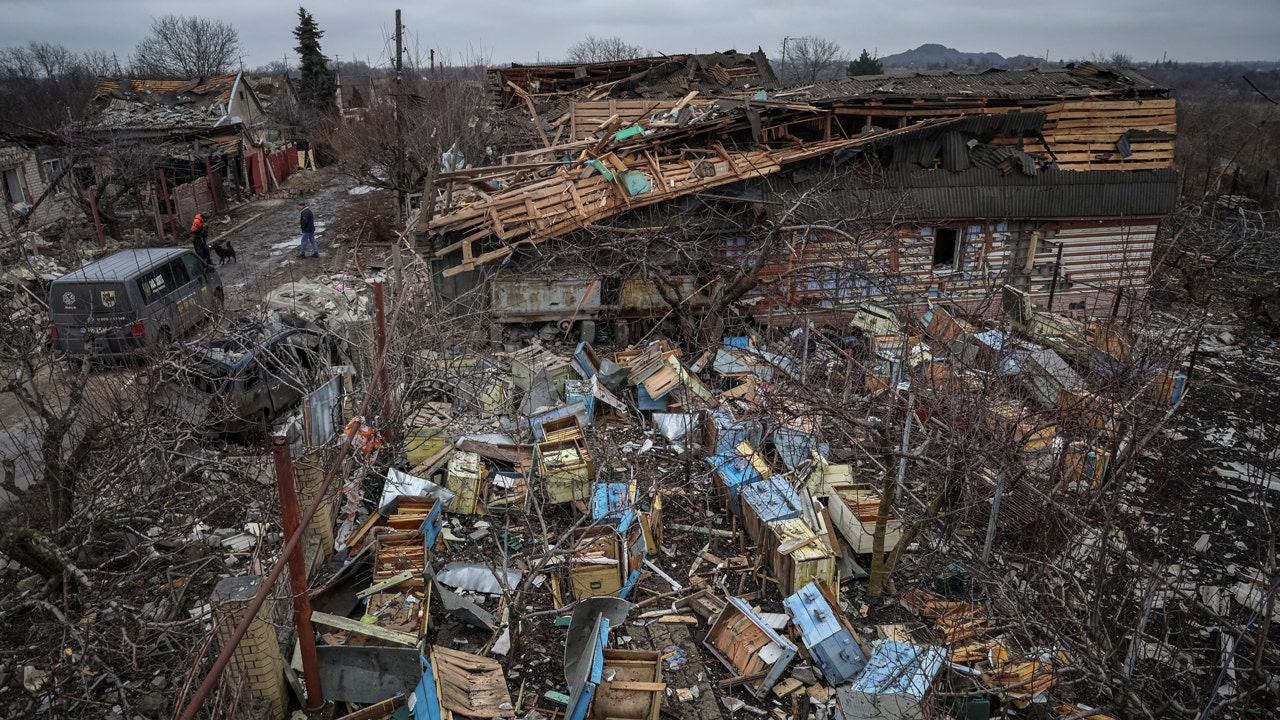North Dakota
Family members with ties to Grand Forks region find their roots with trip to Ireland

GRAND FORKS – When Patrick and Margaret Doyle O’Toole boarded a ship in Ireland to emigrate to Canada, they probably had no idea that 175 years later, approximately 50 of their descendants would return to the same place to commemorate their departure.
It took several O’Toole family members more than 25 years to discover the exact date and place their ancestors began their journey: May 17, 1848, from the port of New Ross, Ireland, said Peter O’Toole, of St. Paul, Minnesota.
O’Toole is a 1973 graduate of Valley-Crystal-Hoople (North Dakota) High School and member of the family that has farmed in the Crystal area since before North Dakota became a state.
“I believe it is rare for any Irish family who left during the Great Potato Famine to be able to trace their roots back to the exact time and location (of their departure) as we were able to do quite recently,” O’Toole said, noting that since many records are now online. “It has become much easier to trace one’s ancestry than it was just 25 years ago, when we started this effort to connect to our distant past.”
In May, about 50 O’Toole cousins, all descendants of Patrick and Margaret O’Toole, traveled to Ireland from Canada and a handful of states, including Michigan, Minnesota, Rhode Island, Hawaii, Connecticut and Texas.
Their two-week trip to Ireland included a visit to the original family tenant farmstead in County Wicklow, one hour south of Dublin.
“The local Irish community was very welcoming,” he said. “It was amazing.”
The O’Tooles were there to learn about early family history, but the historians among them already had uncovered insights about their ancestors’ emigration to the U.S.
After nearly 30 years as farmers renting land in Ontario, Thomas O’Toole – one of Patrick and Margaret O’Toole’s children – and his son Patrick immigrated to Pembina County in northeastern Dakota Territory around 1879, ten years before North Dakota statehood. They homesteaded in Crystal.
“The O’Toole family still thrives in this North Dakota community,” Peter O’Toole said.
Family members are still farming there. They were unable to attend the reunion in Ireland because the date conflicted with planting season. The farm has grown to several thousand acres.
Dick and Keitha O’Toole, Peter O’Toole’s uncle and aunt who live in Grand Forks and Crystal, did not attend the reunion, but their son Jaime O’Toole, of San Antonio, Texas, did.
“They had a wonderful time,” Keitha O’Toole said.
Family members were able to see a replica of the ship upon which their ancestors embarked, “which I thought was amazing,” she said.
The original homesteader, Thomas O’Toole, is buried in St. Patrick’s Catholic Church Cemetery in Crystal, North Dakota, Peter O’Toole said.
Contributed
Support for their journey
Peter O’Toole, 68, said the English landlords who owned the estate — where his great-great-great-grandparents were tenant farmers — likely paid their passage to Canada, which was less than to the United States.
The landlords were incentivized to do so by English Poor Laws, enacted during the Great Potato Famine, a period from 1845 to 1852 that brought starvation, disease and poverty and caused many to emigrate. Under these laws, landlords were assessed by the government to support a system of poor relief; the assessment was based on the number of tenants.
The Fitzwilliam estate offered their tenants – including Patrick and Margaret O’Toole – an option to emigrate to Canada with paid transportation, Peter O’Toole said.
Not all landlords were as generous. Some tenants were forced to leave – often with no hope and nowhere to go – after their thatched-roofed cottages were burned, O’Toole said. The common term for such action was “the clearances.”
O’Toole also believes the estate would have provided the couple with oats and other provisions for their journey. They walked 40 miles, with their five children, from their home near Tinahely to board the sailing ship, Jessie, in New Ross.
“They would have prepared a small chest or box with all their belongings, and (traveled) on a pony cart” to New Ross, he said. “Several thousands came that way.”

Contributed
Their journey across the Atlantic lasted six weeks; they arrived in Quebec in late June 1848.
It is estimated that the famine caused about one million deaths between 1845 and 1851, either from starvation or hunger-related disease, O’Toole said. Another one million Irish people emigrated.

Contributed
A highlight of the family reunion in Ireland was a visit to the site of Patrick and Margaret O’Toole’s tenant farmstead in County Wicklow. It was a single-level structure that included three dwellings – on one end, the couple’s home had been demolished, but the remaining structure still stands and is inhabited, Peter O’Toole said.
He took a handful of dirt from the site, a piece of family history he eventually mixed into the soil of a potted Oxalis, a shamrock plant, in his St. Paul home, he said.
“I was awestruck that we were all there and all having descended (from this couple) … and were standing on that soil,” he said. “The weather was perfect. The hospitality was exceptional.”
The O’Tooles planted a Canadian maple tree there and were entertained by an Irish singer, who sang traditional music. At a restaurant in County Wicklow, they enjoyed an elaborate 19th-century banquet.
The Fitzwilliam estate his ancestors left dates back to the era of King Henry VIII, O’Toole said, and was once said to span 92,000 acres. The same family owned it for two or three hundred years. The estate was eventually sold to tenants and turned into a golf course.
The area was “green, lush, idyllic – there were hedgerows to show the property lines,” he recalled. The scenery was not only pretty, he said, but he was impressed by “the warmth and friendliness of the people, they were so hospitable. They knew the U.S. O’Tooles were in town.”
The O’Toole family was aided in the search for their Irish roots by Kevin and Eleanor Lee, who created a website called the Coollattin Canadian Connection. Maps and ship lists kept at Coollattin House enabled the Lees to bring people back to the cottage or field where their ancestors once lived, according to the New Ross Standard newspaper.
“We are the first family, or one of the first families, to come back to see where the family came from,” O’Toole said. “They’re as excited about our connecting with our roots as we are, and they want other people to connect.”

Contributed
The O’Toole family story “is a nice wholesome story,” Peter O’Toole said. It’s a story “that can be replicated” all across the country, in many families, whether their roots are in Norway, Ireland, English or Germany.
For him, to visit his ancestors’ tenant farmstead in Ireland, imagine their life there and their decision to leave 175 years ago, was “an extraordinary feeling, unlike any other,” he said, “because it was shared. Everybody was gobsmacked.”
The reunion in Ireland, he said, was meant “to honor them.”

North Dakota
Zebra Mussels In North Dakota Lakes: Will It Really Be That Bad?

Zebra mussels are going to ruin all of our lakes right?
Okay, I know I’m going to take some heat on this, but here goes. We’ve been hearing about zebra mussels for a long time now. How they will destroy ecosystems, ruin beaches, clog up water intakes, compete with native species, etc.
You’ve seen the commercials and billboards from North Dakota Game and Fish, “Clean, Drain and Inspect.” Zebra mussels are a problem, but is it really all doom and gloom? More on that in a moment.
Zebra mussels are now in several North Dakota lakes and rivers, and you can bet more will be added in the future.
They include the Red River, Lake LaMoure, Lake Ashtabula, Lake Elsie, the James River, and the Sheyenne River all in eastern North Dakota.
So far western North Dakota has been spared, but you can bet zebra mussels are coming. Here’s a map and more on ANS-infested waters in North Dakota.
Humans are considered the primary transporter of zebra mussels, but there are other spreaders. According to Researchgate, waterfowl can transfer zebra mussels at the larvae stage.
What are we going to do about millions of migrating waterfowl each year? Not to mention other shorebirds, reptiles, and even mammals.
I’m very familiar with zebra mussels. I have a cabin on Enemy Swim Lake in northeast South Dakota. We’ve had zebra mussels present in the lake now going on for 3 years.
(A very small zebra mussel that was found on our beach this past weekend.)
Enemy Swim is located about 5 miles south of Pickerel Lake in South Dakota. Pickerel Lake has had zebra mussels for a few years longer than my lake.
Despite joint efforts from Fish and Game, cabin owner volunteers, and interns from Fish and Game with inspection points at the boat ramp, zebra mussels still found their way into my lake. I know we all did our part to prevent it, but I sometimes think that eventually, nature will take its course.
Will zebra mussels really ruin a lake?
There’s a lot of big claims and theories out there. No doubt it will affect your beach life. You will have to wear water shoes because zebra muscles can be sharp and could cut your feet. I know I swim with my water shoes normally anyway, as I don’t like creepy crawlies touching my feet in the water.
Will zebra mussels cause your lake property values to crash?
To be honest, no sign of that anywhere. Much of Minnesota’s lakes are infested with zebra mussels. People are still spending millions of dollars for cabins on Minnetonka, Pelican, or Detroit Lakes area lakes.
Even Pickerel Lake, next to my lake has people snatching up some very expensive million-dollar cabins. You can’t even find a cabin for sale on my lake. According to swnewsmedia, there’s no link between a drop in property values and zebra muscles.
Zebra mussels will actually clear up the water they infest.
This might improve the fishing, depending on the lake. Species like Smallmouth Bass, Perch, Walleyes, and even panfish are known to gorge on zebra mussels. You might catch bigger fish because of this.
With cleaner water means you will have more sunlight and more vegetation in the lake. Again, this is thought to improve the size of the fish. Fish will have more places to hide and grow bigger. It may cause anglers to adapt to new strategies to catch fish. In some cases, it could make fishing more difficult.
As far as whether zebra mussels will destroy the ecosystem of lakes?
I’m going to come right out and say it. I think this is highly exaggerated. I’m not a biologist and don’t claim to be one.
Zebra mussels have been in the Great Lakes since the 1980’s. The Walleyes and Smallmouth Bass have never been bigger. People are still catching fish and lakes are still alive.
Zebra mussels have been in Minnesota lakes now for decades and the cabin owners I know say nothing has changed except a little extra cleaning on the docks when they pull them out each year.
Lakes like Lake of the Woods, Mille Lacs, and all of the lakes around Detroit Lakes are still alive and well.
Let’s face it: Even the highly prized Walleye is an invasive species to lakes in our area.
In conclusion:
When zebra mussels reach your favorite lake it will certainly change the ecosystem. Your “lake life” will likely have to adapt to some necessary changes.
However, will zebra mussels turn your lake into a barren wastewater? I don’t think so. Adapt or die. That’s life in a nutshell.
Do I want zebra mussels in our lakes? No, of course not. However, I’m being realistic. Sometimes you have to look for the good with the bad.
North Dakota’s Top 11 Lakes According To Our Fans
Plant Some Of These In Your Garden to Keep Mosquitoes Away
Gallery Credit: Michelle Heart
North Dakota
Color of Hockey: Rangers prospect Emery 'comfortable' heading to North Dakota | NHL.com

Murphy played quarterback for North Dakota from 1960-62 and was its coach from 1978-79. He left a lasting impression on Eric Emery, especially after Cal Fullerton went 12-0 in 1984. Murphy died Oct. 29, 2011.
“I guess I kind of transported into EJ, the sense of respect I have for Gene Murphy and what he did for us at Cal Fullerton,” said the elder Emery, who went on to become a linebacker for the BC Lions, Calgary Stampeders and Ottawa Rough Riders of the Canadian Football League from 1985-87.
“He brought us together and he actually told us that we were going to be champions because he saw the capability in us. I just had to have him (EJ) go look at North Dakota because Gene came from there and a lot of his coaches that he brought with him came from there and they were such good guys. So I figured North Dakota must have something going on.”
There’s also a North Dakota connection between the younger Emery and NTDP coach Nick Fohr, who was born and raised in Grand Forks and regularly attended UND games with his father Roger, who was an off-ice official right up until when he died of cancer in January 2023.
“Oh yeah, we talked about it, for sure,” Fohr said. “Pretty cool place for me and it’s pretty cool to have somebody like EJ interested in that place.
“When people think of an EJ Emery, a Black kid that that’s looking to play hockey, rarely are they going to place him in North Dakota, right? We had some really good conversations about the city, the town and what it’s like. From talking to EJ and his family, they (UND) did a really, really, really good job in the recruiting process in making him feel comfortable, letting him see what it’s like and meeting some football players and other people. It just felt like home to him is how I took it.”
North Dakota hockey coach Brad Berry said Emery had been on the team’s radar since he played for Yale Hockey Academy in Abbotsford, British Columbia, in 2021-22.
“When we got to the recruiting process, he got to know us, we got to know him and it felt comfortable,” Berry said. “When we recruit players, we have a criteria of what we want in a player: It doesn’t matter where you come from or who you are. It matters what you are as a person, and he checked every box that we had.”
Emery (6-foot-3, 183 pounds) is UND’s first Black player since Akil Adams, a defenseman who appeared in 18 games from 1992-94.
North Dakota has had diverse rosters since. Washington Capitals forward T.J. Oshie, a United States-born player who is Indigenous, played there from 2005-08. Center Jordan Kawaguchi, a Canada-born player of Japanese ancestry, played for UND from 2017-21 and was team captain in his final season.
Emery’s selection by the Rangers and commitment to North Dakota delighted Adams, who played in the minor leagues and Germany after he left the university.
“I’m still a North Dakota guy through and through,” said Adams, who lives in Detroit. “He’s definitely in the right place and I’m happy to see that there’s actually somebody else there. I just think it probably speaks volumes about the kind of player he is.”
North Dakota
Huskers add top recruit in North Dakota to 2025 class

LINCOLN, Neb. (KLKN) – Matt Rhule and the Nebraska football staff got commitment No. 17 in the 2025 class on Sunday, adding four-star defensive lineman Kade Pietrzak.
The highly sought-after recruit from West Fargo, North Dakota, is the No. 1 recruit in his state and chose Nebraska over Oklahoma, Kansas State and Wisconsin.
Pietrzak checks in at 6-foot-5, 240 pounds and has been on Rhule’s radar since he was hired at Nebraska.
He will join two other defensive linemen in the class of 2025: Omaha North’s Tyson Terry and Malcolm Simpson from Texas.
Pietrzak is the second-highest rated recruit for Nebraska in this year’s class so far behind Simpson.
COMMITED‼️@HuskerFootball @CoachMattRhule @Coach_Knighton @HuskerCoachTW
#GBR pic.twitter.com/SAXF1FOQ2J— Kade Pietrzak (@KadePietrzak) July 21, 2024
-

 Politics1 week ago
Politics1 week agoTwo key states to see massive GOP voter registration operation
-

 World1 week ago
World1 week agoJapan, Germany agree to boost security cooperation in Pacific
-

 News1 week ago
News1 week agoWhy the next president's judicial appointments will impact climate action
-

 Politics1 week ago
Politics1 week agoYearslong tensions boil over as ex-Obama staffers gang up on Biden: 'Clooney was exactly right'
-

 News5 days ago
News5 days agoIn Milwaukee, Black Voters Struggle to Find a Home With Either Party
-

 News1 week ago
News1 week agoVideo: Biden Asks America to ‘Lower the Temperature’
-

 World1 week ago
World1 week agoUkraine: shelling in Kherson leaves at least two people dead
-

 Politics1 week ago
Politics1 week agoBiden tells Michigan crowd he's 'not going anywhere' amid chants of 'don't you quit'














